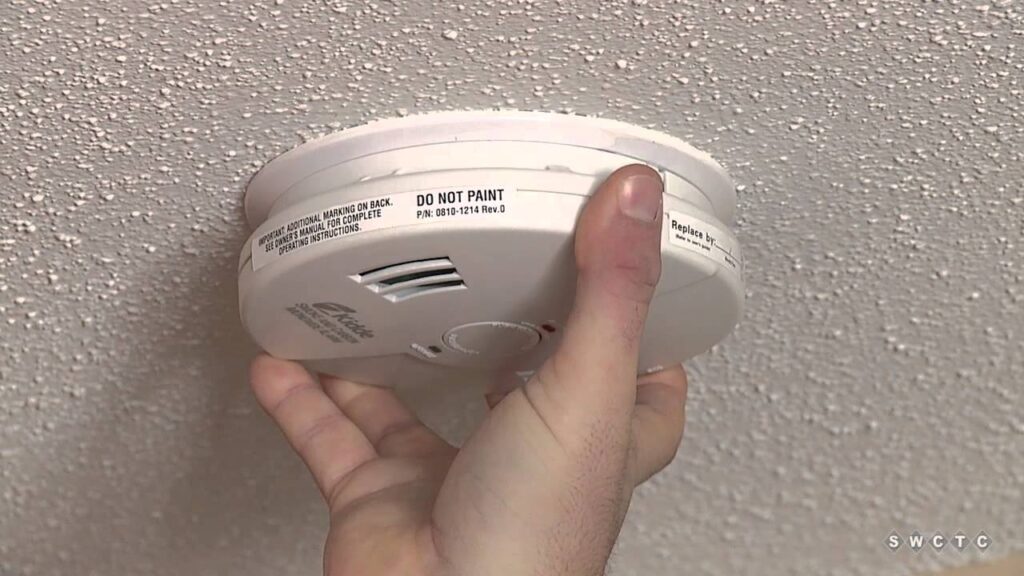Changing Fire Alarm Batteries: A Comprehensive Guide
Fire alarms are crucial safety devices that protect lives and property by alerting occupants to the presence of smoke or fire. Ensuring these alarms are properly maintained and have functioning batteries is essential for their effectiveness. In this comprehensive guide, we will walk you through the process of changing fire alarm batteries, emphasizing the importance of regular maintenance and providing step-by-step instructions for various types of fire alarm systems.
The Importance of Regular Fire Alarm Battery Replacement
Fire alarms rely on batteries to operate, and these batteries have a limited lifespan. As batteries age, they lose their ability to hold a charge, reducing the alarm’s reliability. Replacing batteries regularly is crucial to ensure your fire alarm system remains functional and ready to alert you in case of an emergency.Most fire alarm manufacturers recommend changing batteries at least once a year, or whenever the low battery indicator starts beeping. However, it’s always best to consult the manufacturer’s instructions for specific recommendations.
Types of Fire Alarm Systems
Before we dive into the battery replacement process, it’s important to understand the different types of fire alarm systems and their components:
- Hardwired Fire Alarms: These alarms are directly connected to the building’s electrical system and have a backup battery in case of a power outage.
- Wireless Fire Alarms: These alarms communicate with each other and a central control panel using radio frequency (RF) signals. They rely entirely on battery power.
- Combination Smoke and Carbon Monoxide (CO) Alarms: These alarms detect both smoke and CO and are often found in homes with gas appliances or attached garages.
Preparing for Battery Replacement
Before you begin replacing the batteries, make sure you have the following:
- Replacement batteries: Ensure you have the correct type and size of batteries for your specific fire alarm model. Refer to the manufacturer’s instructions or the alarm itself for the recommended battery type.
- Ladder: If the fire alarm is located on a high ceiling, you’ll need a sturdy ladder to safely reach it.
- Screwdriver: Some fire alarms may require a screwdriver to remove the cover or access the battery compartment.
Step-by-Step Instructions for Changing Fire Alarm Batteries
The process for changing fire alarm batteries may vary slightly depending on the type of system you have. Here are the general steps to follow:
Hardwired Fire Alarms
- Locate the fire alarm: Identify the specific alarm that needs its battery replaced.
- Turn off the power: Switch off the circuit breaker that supplies power to the fire alarm. This will prevent any electrical shocks during the battery replacement process.
- Remove the alarm: Carefully remove the fire alarm from its mounting base by twisting it counterclockwise or following the manufacturer’s instructions.
- Disconnect the alarm: Disconnect the alarm from the wiring by gently pulling the connector apart.
- Replace the battery: Locate the battery compartment and replace the old battery with a new one, ensuring proper polarity alignment.
- Reconnect the alarm: Reconnect the alarm to the wiring and twist it clockwise to secure it back onto the mounting base.
- Turn the power back on: Switch the circuit breaker back on to restore power to the fire alarm.
- Test the alarm: Press the test button to ensure the alarm is functioning properly with the new battery.
Wireless Fire Alarms
- Locate the fire alarm: Identify the specific alarm that needs its battery replaced.
- Remove the alarm: Carefully remove the fire alarm from its mounting base by twisting it counterclockwise or following the manufacturer’s instructions.
- Replace the battery: Locate the battery compartment and replace the old battery with a new one, ensuring proper polarity alignment.
- Reinstall the alarm: Twist the alarm clockwise to secure it back onto the mounting base.
- Test the alarm: Press the test button to ensure the alarm is functioning properly with the new battery.
Combination Smoke and CO Alarms
The process for changing batteries in combination smoke and CO alarms is similar to the steps outlined for hardwired or wireless fire alarms. However, it’s essential to follow the specific instructions provided by the manufacturer, as some models may have unique features or requirements.
Maintaining Your Fire Alarm System
Replacing batteries is just one aspect of maintaining your fire alarm system. To ensure optimal performance and safety, it’s recommended to:
- Test your alarms monthly: Press the test button on each alarm to ensure they are functioning properly.
- Replace alarms every 10 years: Most fire alarm manufacturers recommend replacing the entire alarm unit every 10 years, even if the batteries are changed regularly.
- Keep alarms clean: Dust and debris can interfere with the alarm’s sensors, so gently vacuum or wipe the alarm’s exterior regularly.
- Never paint over an alarm: Painting can clog the alarm’s sensors and prevent it from functioning correctly.
Table: Battery Replacement Frequency
| Alarm Type | Battery Replacement Frequency |
|---|---|
| Hardwired Fire Alarms | Annually or when low battery indicator beeps |
| Wireless Fire Alarms | Annually or when low battery indicator beeps |
| Combination Smoke and CO Alarms | Annually or when low battery indicator beeps |
For more detailed information on fire alarm maintenance and battery replacement, refer to the National Fire Protection Association (NFPA) 72: National Fire Alarm and Signaling Code.
Frequently Asked Questions (FAQ)
Q1: How often should I replace the batteries in my fire alarm?A1: Most manufacturers recommend replacing fire alarm batteries at least once a year or whenever the low battery indicator starts beeping. However, it’s always best to consult the specific instructions provided by the manufacturer of your fire alarm system.
Q2: Can I use generic batteries instead of the ones recommended by the manufacturer?A2: It’s always best to use the battery type specified by the manufacturer for your specific fire alarm model. Using generic or incompatible batteries may not provide sufficient power or may even damage the alarm.
Q3: What should I do if my fire alarm keeps beeping after I’ve replaced the battery?A3: If the alarm continues to beep after you’ve replaced the battery, there may be an issue with the alarm itself. First, ensure you’ve installed the new battery correctly. If the beeping persists, contact the manufacturer or a qualified professional for further assistance.
Q4: Can I paint over my fire alarm?A4: No, you should never paint over a fire alarm. Painting can clog the alarm’s sensors and prevent it from functioning correctly. If you need to change the color of your alarm, contact the manufacturer for a replacement unit in the desired color.
Q5: How do I test my fire alarm after replacing the battery?A5: Most fire alarms have a test button that you can press to ensure the alarm is functioning properly. Refer to the manufacturer’s instructions for specific testing procedures, as some models may have additional requirements.
Conclusion
Changing fire alarm batteries is a crucial aspect of maintaining a safe and functional fire alarm system. By following the steps outlined in this guide and adhering to the manufacturer’s recommendations, you can ensure your alarms are always ready to protect you and your loved ones in case of an emergency. Remember to test your alarms regularly and replace them every 10 years to keep your home or building safe.



